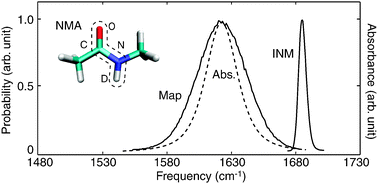Molecular mechanics force field-based map for peptide amide-I mode in solution and its application to alanine di- and tripeptides
Abstract
A molecular mechanics (MM) force field-based empirical electrostatic potential map (MM map) for amide-I vibrations is developed with the aim of seeking a quick and reasonable approach to computing local mode parameters and their distributions in solution phase. Using


 Please wait while we load your content...
Please wait while we load your content...